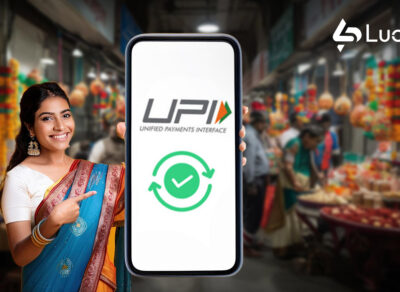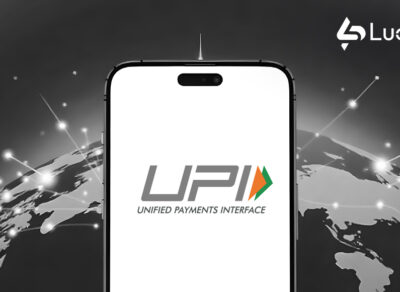Overview of UPI Switching Services and Their Role in Transforming Payment Systems in India

India’s payment ecosystem has witnessed a seismic transformation over the past decade, largely driven by the Unified Payments Interface (UPI). With its seamless, real-time, and secure transaction capabilities, UPI has become the backbone of digital payments in the country. A critical but often underappreciated component enabling this system to function efficiently is the UPI switching service. This blog delves into the mechanics of UPI switching services and their transformative role in India’s payment landscape.
What are UPI Switching Services?
UPI switching services are the technological backbone that facilitates the interoperability of different banks and payment systems. At their core, these services manage the routing of payment requests from one entity—such as a bank or third-party app—to another, ensuring that funds are transferred securely and in real-time.
The UPI switch operates as a central hub within the UPI ecosystem, performing critical functions like:
- Transaction Routing: Directing payment instructions to the correct destination bank or payment service provider.
- Authorization and Authentication: Validating user credentials and ensuring the legitimacy of transactions.
- Real-time Settlement: Ensuring instantaneous fund transfers between accounts while updating the respective ledgers in real-time.
- Interoperability Management: Facilitating seamless interaction between disparate banks, wallets, and financial institutions, which is a hallmark of UPI.
How UPI Switching Services Work
When a user initiates a UPI transaction, a complex series of processes occur in milliseconds, powered by switching services:
- Initiation: A user enters the UPI PIN on their banking app or third-party payment application (e.g., Google Pay, PhonePe).
- Request Transmission: The app sends a transaction request to the payment service provider (PSP).
- Routing via the UPI Switch: The switch routes this request to the recipient’s bank or PSP.
- Authentication: The recipient’s bank validates the account details and authenticates the transaction.
- Settlement: Funds are debited from the sender’s account and credited to the recipient’s account in real-time.
- Notification: Both parties receive confirmation notifications, completing the process.
Transformational Impact on India’s Payment Systems
UPI switching services have catalyzed several transformative changes in the Indian payment ecosystem:
1. Unprecedented Scale and Speed
UPI switching services are built to handle massive transaction volumes—a critical feature given the exponential growth of UPI. In FY 2024-25 alone, UPI clocked over 100 billion transactions, a testament to the scalability and efficiency of switching services.
2. Enhancing Financial Inclusion
By enabling interoperability and reducing reliance on traditional banking channels, switching services have brought millions of unbanked and underbanked individuals into the formal financial fold. Users in rural and semi-urban areas can access digital payments via mobile apps, bridging geographic and economic barriers.
3. Cost Efficiency
UPI’s zero-merchant-discount-rate (MDR) model is made viable by efficient switching services, which ensure low-cost, high-speed transactions. This has incentivized merchants to adopt digital payment methods, expanding the payment ecosystem.
4. Boosting Innovation and Competition
The interoperability enabled by UPI switches has created a level playing field for banks, fintechs, and third-party apps. This competitive landscape fosters innovation, as players continuously enhance user experiences and introduce value-added services.
5. Driving Global Aspirations
India’s success with UPI has inspired several countries to explore similar models. UPI switching services—with their robust architecture—have been pivotal in showcasing how a scalable and interoperable payment system can be implemented effectively.
Key Players in the UPI Switching Ecosystem
National Payments Corporation of India (NPCI)
The NPCI is the central authority managing UPI infrastructure, including the switching mechanism. It ensures compliance, security, and interoperability across the ecosystem.
Banks and PSPs
Banks and Payment Service Providers are integral to the ecosystem, leveraging UPI switching services to offer seamless transactions to their users.
Third-party Application Providers (TPAPs)
Apps like PhonePe, Paytm, and Google Pay rely on UPI switches to facilitate transactions across multiple banks.
Technology Enablers
Several technology companies partner with banks and PSPs to optimize switching operations, enhancing performance and scalability.
Challenges and Future Prospects
Challenges
- Security Concerns: With rising transaction volumes, the risk of cyber-attacks and fraud has increased, necessitating continuous improvements in security protocols.
- Operational Load: Managing billions of transactions daily requires robust infrastructure, which demands constant upgrades and scalability.
Future Prospects
- International Expansion: NPCI’s collaborations to implement UPI-like systems abroad will push switching services to adapt to global standards and regulations.
- AI and Blockchain Integration: Incorporating AI for fraud detection and blockchain for transaction transparency could revolutionize UPI switches.
- Enhanced User Experience: Future upgrades will likely focus on streamlining the user journey, ensuring faster and more intuitive payment processes.
Conclusion
UPI switching services have emerged as the unsung heroes of India’s digital payment revolution. By ensuring seamless interoperability, real-time settlement, and robust security, they have transformed how Indians transact, setting a benchmark for the global financial ecosystem. As UPI continues to evolve, its switching services will undoubtedly play a pivotal role in shaping the future of digital payments—not just in India but worldwide.



